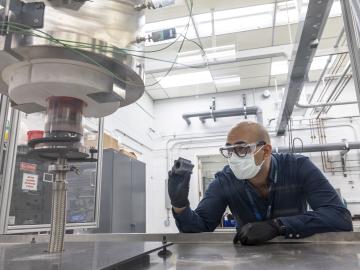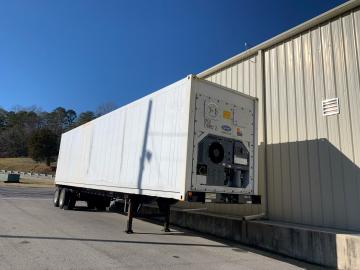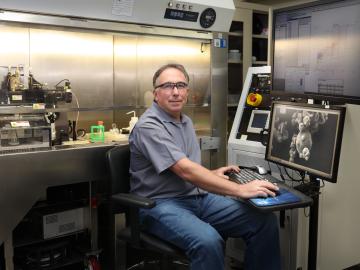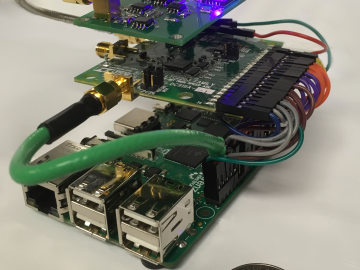
Filter News
Area of Research
News Topics
- (-) Advanced Reactors (5)
- (-) Biology (29)
- (-) Coronavirus (9)
- (-) Quantum Science (12)
- 3-D Printing/Advanced Manufacturing (17)
- Artificial Intelligence (15)
- Big Data (10)
- Bioenergy (21)
- Biomedical (11)
- Biotechnology (3)
- Buildings (16)
- Chemical Sciences (15)
- Clean Water (6)
- Composites (6)
- Computer Science (34)
- Critical Materials (5)
- Cybersecurity (10)
- Element Discovery (1)
- Energy Storage (27)
- Environment (39)
- Exascale Computing (8)
- Fossil Energy (1)
- Frontier (10)
- Fusion (11)
- Grid (16)
- High-Performance Computing (16)
- Hydropower (8)
- Irradiation (1)
- Isotopes (10)
- ITER (2)
- Machine Learning (10)
- Materials (37)
- Materials Science (26)
- Mercury (2)
- Microscopy (18)
- Molten Salt (4)
- Nanotechnology (18)
- National Security (17)
- Neutron Science (22)
- Nuclear Energy (20)
- Partnerships (8)
- Physics (19)
- Polymers (10)
- Quantum Computing (7)
- Security (11)
- Simulation (6)
- Space Exploration (6)
- Summit (9)
- Transportation (17)
Media Contacts

Drilling with the beam of an electron microscope, scientists at ORNL precisely machined tiny electrically conductive cubes that can interact with light and organized them in patterned structures that confine and relay light’s electromagnetic signal.

Three ORNL scientists have been elected fellows of the American Association for the Advancement of Science, or AAAS, the world’s largest general scientific society and publisher of the Science family of journals.

A rapidly emerging consensus in the scientific community predicts the future will be defined by humanity’s ability to exploit the laws of quantum mechanics.

To explore the inner workings of severe acute respiratory syndrome coronavirus 2, or SARS-CoV-2, researchers from ORNL developed a novel technique.

A novel method to 3D print components for nuclear reactors, developed by the Department of Energy’s Oak Ridge National Laboratory, has been licensed by Ultra Safe Nuclear Corporation.

A team of scientists led by the Department of Energy’s Oak Ridge National Laboratory and the Georgia Institute of Technology is using supercomputing and revolutionary deep learning tools to predict the structures and roles of thousands of proteins with unknown functions.

Oak Ridge National Laboratory researchers have retrofitted a commercial refrigeration container designed to ensure COVID-19 vaccines remain at ultra-low temperatures during long transport and while locally stored.

The Department of Energy’s Oak Ridge National Laboratory is collaborating with industry on six new projects focused on advancing commercial nuclear energy technologies that offer potential improvements to current nuclear reactors and move new reactor designs closer to deployment.

Mircea Podar has travelled around the world and to the bottom of the ocean in pursuit of scientific discoveries, but it is the uncharted territory he encounters when working with new microbes that inspires his research at ORNL.

Qrypt, Inc., has exclusively licensed a novel cyber security technology from the Department of Energy’s Oak Ridge National Laboratory, promising a stronger defense against cyberattacks including those posed by quantum computing.


